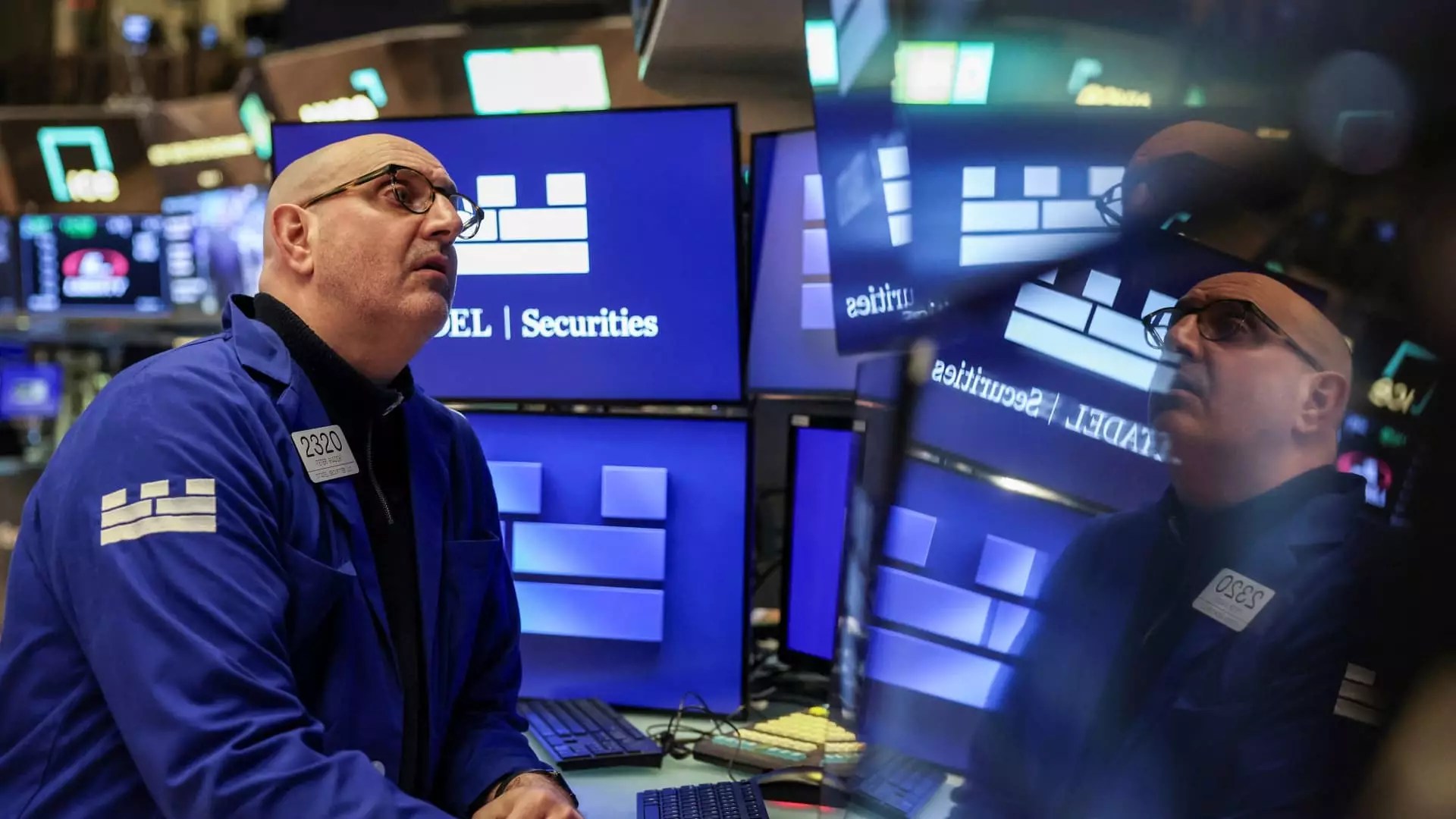The anticipation surrounding April 2 has sent ripples through Wall Street, reflecting the deep-seated anxieties about the future of U.S. trade policy under President Donald Trump. Investors are holding their breath, hoping for clarity on tariffs—a topic that has already spiraled into a source of volatility and uncertainty in the marketplace. The S&P 500, currently more than 8% off its historical peak, has shown signs of distress earlier this year, throwing many investors into a tailspin as they grapple with the implications of aggressive tariff strategies on an increasingly interconnected global economy. The situation is particularly precarious; with technology stocks like the Nasdaq Composite plummeting by over 13%, one cannot help but wonder if this is merely the calm before an even greater storm.
Market sentiment is laden with skepticism. Even if Trump takes the Rose Garden stage with a well-laid-out plan for reciprocal tariffs, doubts linger over whether such a framework will truly assuage investors’ fears or simply pave the way for further distress. According to Gabriela Santos, chief market strategist for the Americas at J.P. Morgan Asset Management, a vague framework is unlikely to trigger a relief rally; what markets need is a detailed outline that quantifies tariffs on specific countries for a set duration. As it stands, markets have yet to fully price in the broader implications of such policies. A piecemeal approach may continue to fuel uncertainty and anxiety.
April: A Month of Rebound or Collapse?
Despite the prevailing doom and gloom, historical trends could provide a glimmer of hope for April. Oppenheimer’s technical strategist Ari Wald points out that the S&P 500 has, in fact, historically rebounded during this month when starting below the 200-day moving average. On average, there’s a notable 2.5% positive return, occurring 73% of the time since 1950. But given today’s complexities, merely relying on historical data may be perilous; while optimism is welcome, one must question its practicality in an age of trade wars and global economic tensions.
The reality is that any enthusiasm among investors hinges on clear answers not just about tariffs, but also about the overall economic landscape. Brett Ryan, senior U.S. economist at Deutsche Bank Securities, presents a grim scenario: if the Trump administration adopts a “maximalist” stance, imposing tariffs disproportionately on the 15 countries with which the U.S. holds significant trade deficits, we could see average tariffs skyrocket to 16%. This rise could profoundly influence economic growth forecasts and raise real fears of stagflation. Increased tariffs may not only curtail economic activity, but also deteriorate consumer sentiment, leading to an alarming contraction in GDP growth.
Predictions and Concerns: The Cost of Tariffs
Market analysts have begun to recalibrate their financial forecasts, often downward, in response to the turbulence generated by potential tariff escalations. David Kostin, chief U.S. equity strategist at Goldman Sachs, has already amended his target for the S&P 500 for the second time this year, lowering it from 6,200 to 5,700 for 2025. As inflationary pressures mount, the stakes become increasingly dire. There lies a very real risk that the measures enacted today could translate into sluggish growth down the line.
Opinions vary widely among market experts, but one undeniable fact remains: uncertainty is the new norm. Christopher Harvey of Wells Fargo Securities cautiously maintains a positive outlook on equities but doesn’t mince words about the potential pitfalls of what the White House has dubbed “liberation day.” The risks embedded in the intricacies of tariffs and international trade negotiations are multifaceted and complex, creating myriad complications for market stability.
Only time will reveal the ultimate ramifications of these policies, but what is abundantly clear is that it is not merely a one-off announcement. We are witnessing the birth of protracted conflicts that could linger for months, if not years, as nations debate retaliations and come to the negotiating table.
In this landscape of uncertainty, investors must cultivate resilience and composure. Embracing a degree of unpredictability in markets might very well be the most prudent approach for navigating these turbulent waters. After all, clarity in trade policy may emerge not as a singular moment of announcement but as a gradual unveiling shaped by ongoing discussions and negotiations. The road ahead is long, and the only certainty is that it is fraught with tension.


Leave a Reply